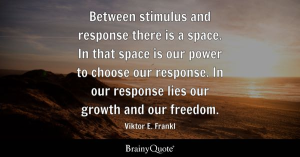I have a few things I have to do everyday that I really dislike doing. I also have a number of different items that pop up during my regular routine that I really hate doing. Cleaning my house is one of those every day challenges that I really dislike doing, but still needs to be done daily, because I like my house to be clean.
Over the years I have had many different ways of getting it done. When my kids were little we took Saturday mornings to clean the house, and then I took Monday mornings to tidy up the weekend messes, but the deep cleaning was done for the week on Saturday mornings. This made for a very long day sometimes, even with the kids helping.
The older my kids get the less time they are at home. That means that more and more of the housework has fallen to me, by myself. I always get it done, but lately it has felt like a chore, a big chore, that I would put off for a day, sometimes two, but that never makes it go away, and that never makes me feel any better. It just creates a bigger mess that takes longer to clean up. I’m not sure why I do this sometimes.
Recently I decided that I really needed to take responsibility for my time better. I decided to take the house cleaning as my first and top priority each day. But I decided to break everything down into more manageable pieces every day rather than trying to do everything on Saturday.
The last couple of weeks I have been working on my new schedule, and I have decided I really love it. At no point in time do I feel overwhelmed with a ton of cleaning, and the whole house gets done every week whereas before, there were some smaller things, like dusting that would get put off for several weeks until I just couldn’t stand it anymore.
This cleaning also typically happens first thing in the morning. I have found that anything big or pressing that needs to be done, I better get it done in the morning, because I never know what I will be doing in the afternoon. Today I was at my husband’s job site helping set trusses. That was unplanned, at least for me, to be there for the duration. It was fun to be able to go and watch and help without worry about coming home to a messy house.
I also try to get my Seminary lesson prepared in the morning, and on bill paying days, I try to get that completed in the morning. Even my exercising is a morning thing, because if I wait I won’t get it done. This makes my mornings full, but gives me a boost when I complete all my important tasks early. That way when I do have unexpected things pop up, or opportunities for spontaneous activities, I am able to go and enjoy, focusing totally on what I’m doing without underlying stress or anxiety about what I “should” be doing instead. This has brought a lot of peace of mind to my weeks lately.






































You must be logged in to post a comment.